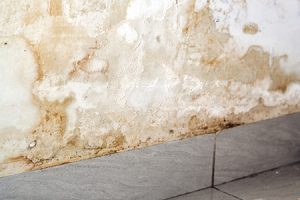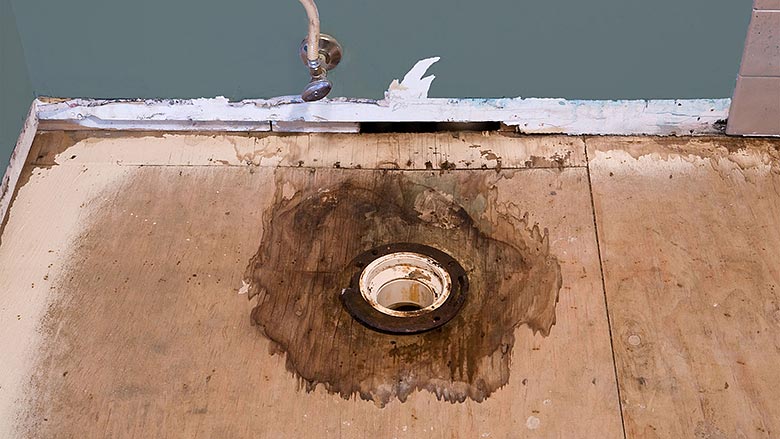Have you been in search of facts and techniques on How to Prevent Bathroom Water Damage?

The shower room is extremely at risk for damp accumulation and also prospective water damages due to the constant use of water in it. This article supplies easy inspection strategies to help identifying water damage hazards.
The regular use of water in the shower room makes it exceptionally susceptible for wet build-up and also prospective water damage. By examining it consistently, you can minimize water related damages.
The following collection of examinations is very easy to do and must be done once in every 3 months in order to keep your shower room in good shape as well as to stop potential water damages brought on by the bathtub, the shower, pipe joints and also plumbing, sinks, cupboards, and the commode
Do not overlook executing these assessments and be complete while performing them. Bear in mind that these simple assessments can save you a lot of cash by offering very early indicators for water damages
Sinks and Cabinets
Sinks as well as cabinets are exposed to moisture and also moisture everyday as well as are usually neglected. Check regularly under the sink as well as on the kitchen counter above it. Fix any drip in the catch as it might suggest drainpipe problems. Take a look around the sink, slow-moving draining pipelines may show a blocked drain. Replace sink seals if they are fractured or loose.
Tub and also Shower
The shower and also bathtub need unique attention and maintenance. Inspect the floor tiles and replace if split. See to it that there is no missing cement in between the tiles. Inspect and replace cracked caulking at joints where the walls satisfy the flooring or the bath tub. Obstructed drains pipes and also pipes problems will avoid the bathtub from drying as well as may indicate serious problems beneath the bathtub. Speak with an expert instantly to prevent structural damages. Take notice of stainings or soft locations around the bath tub wall surfaces as they may indicate an internal leak.
Plumbing
Signs for water damages are tough to detect since most pipelines are mounted inside the wall surfaces.
Pay unique attention to flooring and wall surfaces wetness as well as spots as they may indicate an unnoticeable plumbing problem. Check dampness degrees in adjacent spaces also.
The Toilet
The bathroom is a susceptible water junction. Examine the water lines and also look for leaks around the toilet seat, in the tube, and also under the water storage tank. If you discover any type of signs of moisture on the flooring around the bathroom, check for leakages in the toilet edge as well as tank seals.
Be aware that hanging commode dish deodorants increases the opportunities for blockages.
TIPS TO PREVENT WATER DAMAGE IN THE BATHROOM
The average household uses approximately 80-100 gallons of water per person per day. For a family of 4, that's almost 2,500 gallons of water a week! The largest portion of this consumption comes from bathroom use. Flushing the toilet uses the most water, followed by taking a shower or bath. With that much water running through the home, water damage in the bathroom is bound to happen. Knowing how to spot signs of a water leak is essential to preventing long-term damage. This guide provides you with tips to reduce the impact of water damage on your bathroom.
CAUSES OF BATHROOM WATER DAMAGE
Pipe breaks are the most common cause of water damage we see in our daily jobs. The age of a pipe plays a large role in a pipe break as well as corrosion. Over time, the metal begins to break down, allowing water to escape. Frozen pipe breaks are also a concern in the winter months. Toilet overflows caused by paper products or children flushing inappropriate items. Degraded caulking around the toilet or bathtub can allow water seepage, sometimes behind the fixture, into the subfloor or walls. Condensation forms when the water in a pipe is cooler than the air temperature. Beads of water form on the exterior of the pipes, sometimes so much so that the water begins to drip and pool below. Sink or shower backups created by poor drainage. HOW TO PREVENT WATER DAMAGE IN YOUR BATHROOM
Inspect your toilet supply line for worn or frayed hoses and replace them as needed. Winterize your plumbing to prevent a frozen pipe break. Use vent fans to prevent condensation that can lead to mold growth. Routinely check and replace degraded caulking around your toilet or bathtub. Increase the temperature in your toilet tank and insulate your pipes during the warm summer months to keep condensation from forming. Use child safety locks on the toilets. Flush only toilet paper. "Flushable" wet wipes are actually not good for your plumbing system. Additionally, feminine hygiene products should not be flushed. Prevent water from escaping the tub or shower. Make sure shower curtains are in good condition. Inspect shower doors and replace the seal strip if necessary. Wipe up any water that accumulates on the floor and use bath mats. Water left to sit can cause damage to the tiles and flooring. Refrain from using bath products containing heavy oils to avoid a clogged drain.

As a keen reader on Preventing Water Damage in the Bathroom, I thought sharing that post was worthwhile. Those who appreciated our blog post please be sure to share it. We enjoy reading our article about Looking for Signs of Water Damage in the Bathroom.
About This